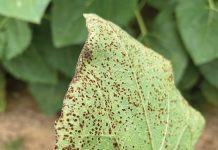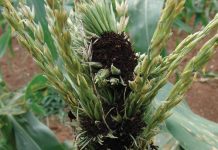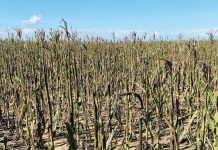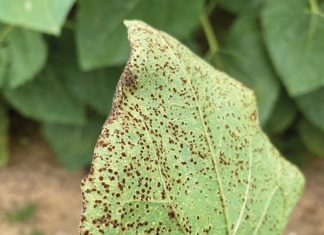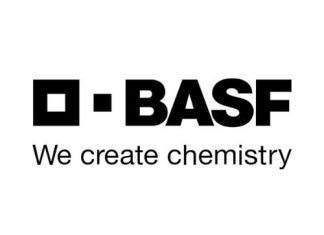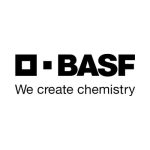
Over the last 80 years, ‘modern farming’ has led to more productive crops through changes in production systems, double-cropping, introduction of high-yielding varieties of crops and monocropping systems. As a result, producers have become more and more dependent on the use of synthetic fertiliser, pesticide, fungicide, and herbicide inputs to achieve target yields, leading to an increase in cost.
Science will always determine the best options, but money will determine if it is possible or not to implement the best options. When determining fertiliser requirements, one should consider factors such as: soil analysis results, crop type, crop removal, crop nutrient recycling (livestock or stover), rainfall, and irrigation, seeding rates and plant density.
Dealing with crop yield and quality limiting factors
Companies like Oasis Agri started looking at the introduction of cover crops to improve crop rotation systems. At the same time, soil fertility and ways to unlock nutrients fixed or locked-up in soils by including bacteria and fungi enzyme activity, were investigated.
It is important to measure soil nutrients and to compare these results with available nutrients. In many soils that are analysed, extremely high nutrient reserves are found, but with low availability to the plants. This may be due to the loss of soil microorganisms that are responsible for the mineralisation and solubilisation of nutrients and those responsible for building or maintaining soil structure. The decline in soil carbon, loss of soil structure, reduction in soil moisture holding capacity and all trace elements also need to be measured. Earthworm populations are virtually non-existent in many soils and there is no or very little beneficial fungal or bacterial activity in soils. These aspects lower production and increase cost.
Unfortunately, there is no ‘magic bullet’ in any system. Ideally, all the crop yield and quality-limiting factors need to be identified and addressed, using as many as possible environmentally friendly products and tools to restore soil health and productivity.
Oasis Agri believes that an approach focusing on sustainability with precision farming as a tool must begin with the following:
- Soil mapping
- Farm mapping using satellite imagery
- The use of a crop productivity map based on the last five years’ NDVI (normalised difference vegetation index) images and recommended zone sampling based on the various production zones within a field. Ground truthing each production zone is extremely important to identify possible reasons other than soil chemistry that may be responsible for the variance in yields. Ground truthing means going to and inspecting each production zone to see if there are any obvious physical differences in soil, such as; slope, aspect, rockiness, drainage, compaction or depth, that may affect crop production.
- The collection of representative soil, leaf, water, and biological samples for analysis at various laboratories.
- Biological analysis of the following: bacteria and fungi, enzyme activity (phosphatase, urease, and ß-glucosidase), nitrate levels, ammonia levels, nitrogen mineralisation rates, microbial activity, and active carbon. Nematode populations (plant parasites and beneficial nematodes) also need to be measured.
- Soil pH amelioration (for high or low soil pH)
- Soil salinity needs to be addressed where necessary – this may require additional drainage.
- Advice on prescription fertiliser recommendations that include all the necessary macro (N, P, K, S, Ca, Mg) and micro elements (Cu, Fe, Mn, Zn, B, Se, Mo, Co, Ni, and I). Producers must make sure to have access to prescription blended and granulated trace elements based on crop requirement, leaf and soil results.
A long-term sustainable approach needs to be adopted to design a robust crop rotation programme that includes cover crops and is based on the principle of ‘planting with purpose.’ When applying the principles of ‘planting with purpose’, the needs of the producer have to be identified as well as what is required to restore a functional, fertile, biologically active soil that can produce profitable crops.
There should be a focus on ‘soil priming’ through microbial stimulation to ensure that the soil microbial community assists in the mineralisation and solubilisation of nutrients in the soil and rainfall.
Working with roots
Each plant species has a different root structure, root amount and composition of root exudates (feeding different biological communities and building carbon in the soil). Root biomass and architectural structure such as tap roots or fibrous roots will also differ. Shallow or deep roots affect the distribution and number of soil organisms and soil stability. Cover crops is a way to incorporate different roots in a system.
A common error with cover crops is that too many species of seeds are added to the seed blend. There should be a focus on the function of each plant in the soil and the compatibility of different plant species. Different seed sizes in a blend make it difficult to plant all together. Some species must be planted very shallow (0,25 to 0,5 cm deep), while other seeds should be planted slightly deeper, varying from 0,5 to 2,5 cm deep. Each species has an ideal planting depth. The best would be to look at the plant survival rates and manage it.
In biologically dead soils it makes sense to add biofertilisers or biopesticides consisting of live microbes to assist restoring life to the soil. Plant growth-promoting bacteria such as Bacillus subtilis isolates, Bacillus amyloliquefaciens and fungi Trichoderma spp., may assist crop nutrition by making certain mineral elements such as nitrogen and phosphate more available to the plant.
It is important to change the production system first to create a habitat for all the organisms that live in the soil, with no-till being the best option for creating a hospitable environment. No-till reduces soil disturbance and can reduce mechanical and fuel costs, but it can increase chemicals used. In some cases, deep ripping may be necessary, but is based on specific soil conditions.
Soil health
Anytime there is a forage or pasture phase in the rotation, an undisturbed habitat for soil biological health will be created and maintained. Even in what appears to be a derelict soil, there will be a number of microorganisms that are in resting stages waiting for the right conditions. One earthworm per square metre can become ten or more in one season given a good food source and favourable conditions.
The introduction of the animal factor in any cropping system is very beneficial. Animals play a vital role in assisting to restore soil productivity through urination, dunging, saliva and hoof action.
By using detailed soil analysis results that include factors such as, sample density, soil carbon percentage, soil pH, macro nutrients and micro nutrients, we can address soil fertility. It is important to address soil pH first, as soil pH is one of the biggest limiting factors for nutrient availability. Consider the chemical relationships between nutrients, either the antagonistic chemistry (decreased availability to the plant of a nutrient due to the action of another nutrient) or synergistic chemistry (increased availability of a nutrient to the plant due to the increase in the level of another nutrient) when deciding what fertilisation programme to follow. An example of antagonistic chemistry is high calcium that will decrease the availability of P, K, Mg, Fe, Zn, Mn, and B to the plant. Examples of synergistic chemistry are boron and calcium, or zinc and phosphorus.
Sulphur is a neglected plant nutrient, and serves many functions in plants, such as the formation of amino acids, proteins, and oils. It is necessary for chlorophyll formation and it promotes nodulation in legumes.
All micronutrients play an essential role in both plant and soil health – they are just as important as macronutrients. Plant growth in micronutrient-deficient soils exhibits similar reductions in productivity as those grown in macronutrient-deficient soils. Adding more NPK fertiliser to soil without addressing micronutrients can be futile and expensive in growing healthy, high-yielding crops.
Some examples of micronutrients functions include the following: nickel is a component of urease enzyme, which is necessary to convert urea to plant available ammonia; molybdenum converts nitrates to amino acids; cobalt assists in atmospheric nitrogen fixation; boron is needed for cell wall integrity; zinc is essential for chlorophyll synthesis as well as for phosphorus uptake.
Granulated micronutrient prescription blends can be blended into prescription fertiliser blends, for in-row application or broadcast application.
By taking a holistic approach to soil, plant health, plant needs and crop use it is possible to manage and reduce overall farm expenses and to increase soil health and productivity.
For more information contact Francis Yeatman at 082 808 8183.




